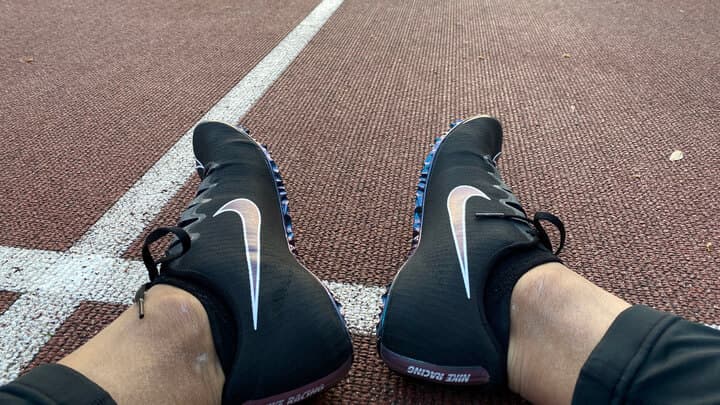Warmups For Sprints
November 22nd, 2020
Sprinting is one of the most explosive movements an athlete can perform - it requires maximal effort, coordination, and concentration. A single misstep at high velocities can derail an athlete’s entire season with a hamstring tear. Warming up before sprinting helps athletes prepare for sprinting by gradually increasing body temperature and intensity. Here’s how I think about my sprint warmup:
Guidelines
- Perform the same warmup before every sprint - whether it’s practice or competition. This makes your warmup into a ritual, which can improve performance by decreasing anxiety.
- Warmups should gradually increase in intensity: starting with walking drills and mobility exercises, and moving towards form drills and strides. This helps minimize injury risk, which is demonstrably higher when your muscles are cold.
- Warmups aren’t workouts. Sprinting is still the best way to get better at sprinting - don’t tire yourself out with too many drills.
- Layer up if it’s cold. If you’re not sweating by the end of your warmup, you’re not warm enough and at increased risk of injury.
- Drills should be performed with focus and purpose.
- My warmup takes about 30 minutes in practice. Before competitions, I like to take extra time in between drills, so it takes around 40-45 minutes.
Warmup
Mobility
This set of mobility exercises helps prepare your body for exercise by getting your blood flowing and lightly stretching your muscles.
- 400m jog
- 15m toe walks / 15m heel walks
- 15m walking knee-to-chest / 15m walking figure four
- 30m skip - arms crossing over the body
- 15m walking RDLs / 15m walking flamingo
- 30m side skips x2
- 15m walking frankensteins / 15m walking lunges with twist
- 30m skip with arm circles
- Iron cross x5
- Reverse iron cross x5
- Single & double leg hip internal rotation stretch x5
- Horizontal leg swings x10
- Forward leg swings x10
Drills and strides
Drills serve two purposes: they help cue sprint posture and form and continue to build intensity as your body warms up. All of these should be performed for 30m.
- Stride (70%)
- A skip
- Hip rotation skip
- B skip
- C skip
- Single leg fast leg
- High knees
- Straight leg bound
- Stride (70%)
- Stride (80%)
- Stride (90%)
- (Spike up)
- Stride (95%)
- Stride (100%)
This warmup is an amalgamation of my favorite drills from almost 15 years of sprinting. Of course, it’s not set in stone - I include extra hamstring mobility and extra strides to help my oft-injured hamstrings get as warm as possible.
As you design your own warmup, remember that warmups should be customized to the individual, since every athlete has their own injury history and postural focus areas. By following the guidelines above, you can create a warmup that both reduces injury risk and improves your sprint performance!
